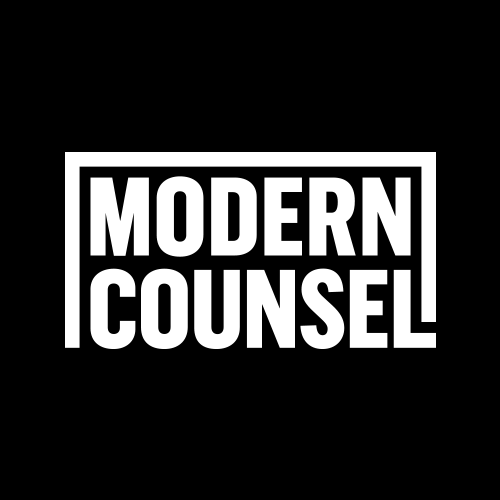|
Getting your Trinity Audio player ready...
|
The celebration of Nasdaq’s fiftieth anniversary in 2021 provided the opportunity for a retrospective look at one of the most influential market indices in the world. The highs and lows of the market technology company have ebbed and flowed with great events in history, a barometer of economic impact dating back to the Nixon administration. No matter how bearish or bullish the markets, Nasdaq has been there to see it through, utilizing groundbreaking technology to enhance those capabilities all along the way.

Photo by Libby Greene
John Zecca, executive vice president and chief legal and regulatory officer for Nasdaq, has been around for many of the company’s most important moments: his tenure dates back twenty years, and he’s covered a great deal of ground in that time. Not satisfied with being a generalist, Zecca has continued to build out both his own expertise and areas of specialization for his multiple teams. Nor is he content with just looking back at his organization’s past accomplishments.
Instead, he’s helping Nasdaq empower more companies to go public and making sure that there is more diversity both in-house and on the legal teams representing Nasdaq abroad.
Zecca’s résumé covers everything Nasdaq could want in an executive vice president. The lawyer served as legal counsel to SEC Commissioner Norman S. Johnson and in the SEC’s Office of General Counsel. He practiced corporate securities law at the firms Hogan Lovells and Kaye Scholer. His most memorable job before Nasdaq was clerking for the Honorable John H. Pratt of the United States District Court for the District of Columbia.
“When you factor in years of seniority and responsibility, I think that job really takes the cake,” Zecca says, laughing. “You’re right out of law school and suddenly you’re working for the judge responsible for writing the law. It was a pretty exciting time.”
Zecca saw real entrepreneurial spirit on the West Coast while in private practice. “Having the opportunity to see these smaller West Coast companies was very valuable,” he says. “It gave great insight as to how capital formation works. One of our roles at Nasdaq is to guide the listing and trading activities of all kinds of companies, so it was important to learn about how they need capital and how various companies are structured.”
“You just have to wake up every day asking: How are you going to evolve and change to make the world around you a better place?”
A Plan to Revitalize
Over the course of Zecca’s career, Nasdaq has identified two major factors that have negatively impacted both companies and investors: fewer companies were going public in their early stages, and investors were missing the chance to invest in innovation. “You want to be able to get in early and take advantage of the explosive growth opportunities,” he noted.
Nasdaq’s Blueprint to Revitalize Capital Markets was a chance to address outdated regulation, streamline potential efficiencies, and promote a new path for how companies can access the full lifecycle of capital formation, from private to public markets. “We looked at everything from tax policy to litigation reform,” Zecca explains. “The goal was to address what we viewed as impediments to companies going public.”
The plan caught on. Public policy was impacted, the SEC took significant action, and most importantly, there has been in uptick in IPOs since Nasdaq launched its blueprint.
Zecca’s colleagues outside the company have also recognized his contributions. “Nasdaq plays a unique role as both a global technology company and the owner of regulated securities exchanges,” says David Lam, a partner at Wachtell, Lipton, Rosen & Katz. “John has the keen ability to examine issues within this larger framework and to understand how they may affect the company’s different stakeholders.”
“One of our roles at Nasdaq is to guide the listing and trading activities of all kinds of companies, so it was important to learn about how they need capital and how various companies are structured.”
Evolution In-House
In December 2020, Nasdaq filed a proposal with the SEC to seek more disclosure on the diversity of company boards for companies whose size exceeds certain thresholds. “We frequently heard from investors that this was an important factor,” Zecca explains. “But it was hard for them to find the information because there is no standardization for this practice.”
That same focus has been implemented in-house. “We have made it clear that we’re disclosing more information publicly about our diversity and inclusion statistics, and we continue to focus on improving those numbers, particularly in management,” Zecca says.
Zecca’s legal and regulatory group is ahead of the pack here. “It just makes sense for us, because I think candidates feel more comfortable with an organization that takes diversity and inclusion seriously,” Zecca says. His team is nearing gender parity, and developing a wider ecosystem of talent has led to a much wider candidate selection on his teams.
The Nasdaq legal and regulatory group has also signed on to the American Bar Association’s Pledge for Change, a commitment to making workforces more diverse. Additionally, Zecca expects Nasdaq’s outside counsel to be transparent about their own diversity statistics, both at the associate and partner levels.
Nasdaq has evolved many times over its fifty years, and Zecca says that ability to change is one that has also served him well. “You just have to wake up every day asking: How are you going to evolve and change to make the world around you a better place?” he explains. “Nasdaq is clearly becoming more tech-focused and more entrepreneurial, and we see many opportunities. I feel great about where we’re going, and I want to make sure that our team’s skill sets continue to evolve to help support that growth.”


